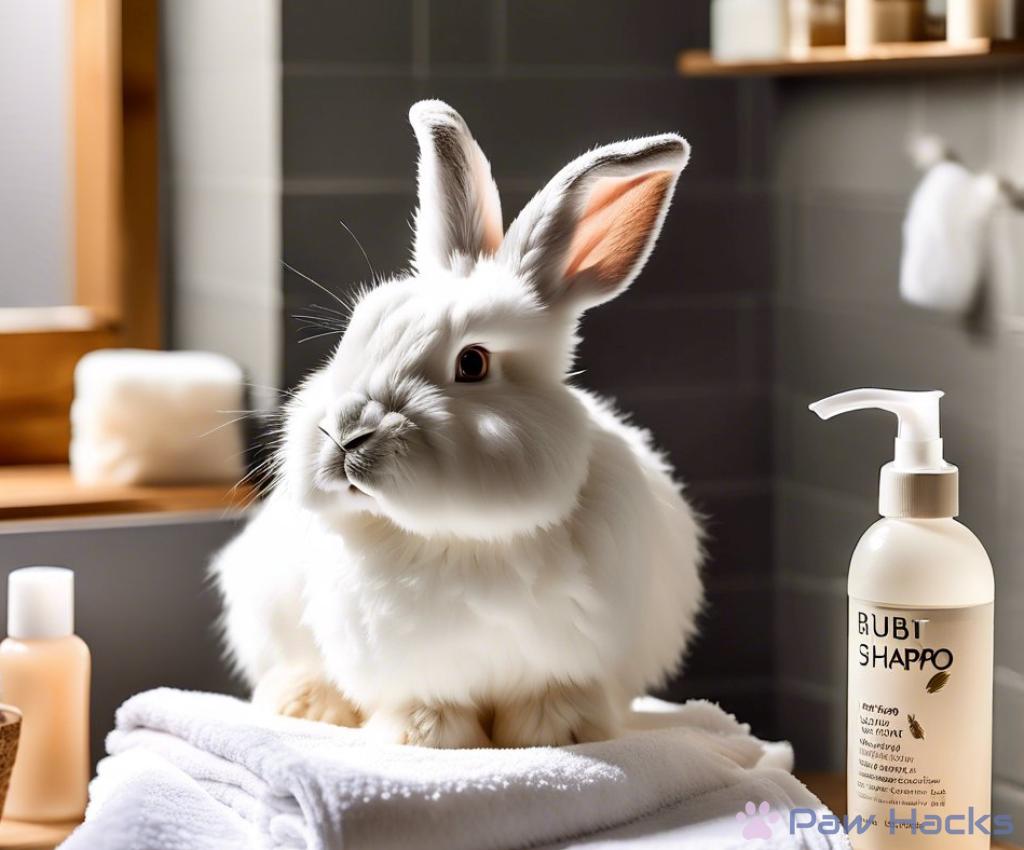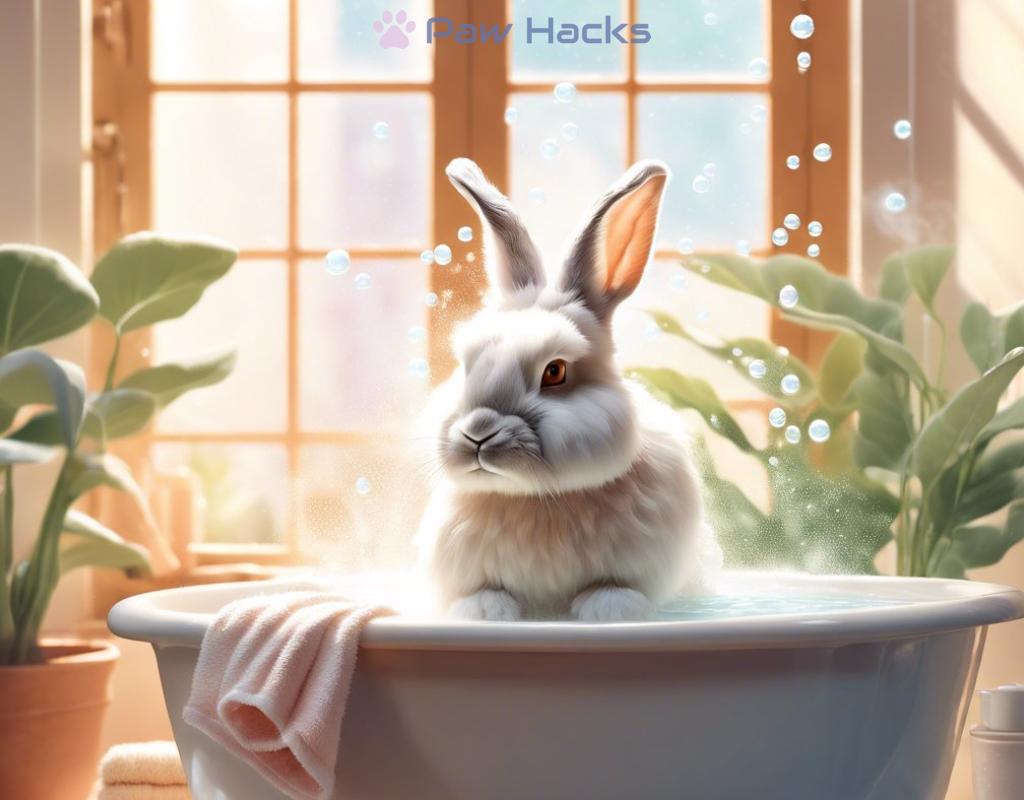Bathing Rabbits: When Necessary
Understanding When Your Rabbit Needs a Bath

Why Bathing is a Sensitive Topic for Rabbits
Bathing a rabbit can be a controversial subject among pet owners. Unlike other pets, rabbits have unique grooming needs and bathing them can sometimes lead to more harm than good. Understanding when a bath is truly necessary is crucial for their health and well-being.
When Should You Consider a Bath?
There are specific scenarios where bathing your rabbit might be necessary. It’s essential to recognize these situations to ensure your rabbit remains clean without causing undue stress or health issues.
- Severe Dirt or Mess: If your rabbit has rolled in something toxic or particularly dirty, a bath may be required.
- Medical Conditions: If your rabbit has a skin condition or injury that requires cleaning, consult a veterinarian for guidance.
- Mobility Issues: Older or disabled rabbits may need assistance if they cannot groom themselves properly.
Alternatives to Bathing
Before resorting to a full bath, consider some alternative cleaning methods that can help maintain your rabbit’s hygiene without the stress of a bath.
- Spot Cleaning: Use a damp cloth to gently wipe areas that are particularly dirty.
- Brush Regularly: A good brushing can help remove loose fur and dirt, making it less likely that a full bath will be needed.
- Use Dry Shampoo: There are safe dry shampoos available that can help clean your rabbit without the need for water.
The Right Techniques for Bathing Your Bunny Safely
When the time comes to bathe your rabbit, it’s essential to approach the process with care and confidence. While bathing can be stressful for your furry friend, employing the right techniques can help create a safe and comfortable experience. By understanding the proper methods, you can ensure that your rabbit remains calm while being cleaned.
First and foremost, gather all necessary supplies before starting the bathing process. You’ll need a shallow basin or tub, a gentle rabbit-friendly shampoo, a towel, and possibly a soft brush. Having everything on hand means you won’t need to leave your rabbit unattended during the bath, which is crucial for their safety.
Creating a Calm Environment
Before introducing your rabbit to water, it’s vital to establish a calm environment. Rabbits are sensitive creatures and may react negatively to loud noises or sudden movements. Play soft music or speak to your bunny in a soothing voice to help them relax. A calm environment can significantly reduce their anxiety and make the bathing process smoother.
When you’re ready to begin, gently place your rabbit into the shallow basin filled with lukewarm water. It’s essential to avoid submerging their entire body; instead, focus on the areas that need cleaning. Rabbits can become stressed if they feel overwhelmed with too much water. Use your hands or a soft cloth to wet only the dirty spots, ensuring to keep their face dry to prevent any distress.
Post-Bath Care for a Happy Bunny
After cleaning, it’s time to dry your rabbit properly. Use a soft towel to pat them dry gently, avoiding any vigorous rubbing that could cause discomfort. Many rabbits appreciate a warm environment after a bath, so consider using a heating pad set on low or a warm room to keep them cozy. It’s crucial to ensure they are completely dry before allowing them to roam freely to prevent them from getting cold or catching a chill.
Lastly, always observe your rabbit for any signs of stress during and after the bath. If they seem anxious or frightened, provide them with a quiet space to relax. Remember, the goal is to maintain your rabbit’s hygiene while minimizing stress. By following these techniques, you can achieve a clean bunny and a happy, healthy bond between you and your pet.
Alternatives to Bathing: Keeping Your Rabbit Clean
While bathing might seem like the obvious solution when your rabbit gets dirty, there are many effective alternatives that can keep your furry friend clean without the stress of a bath. Understanding these methods is essential for every rabbit owner who wants to ensure their pet remains healthy and happy.
One of the most effective techniques for maintaining your rabbit’s hygiene is spot cleaning. This method allows you to focus on specific areas that might need attention, such as the paws or underside, without subjecting your rabbit to a full bath. Using a damp, soft cloth, gently wipe away dirt or stains, being careful to avoid their face, which can cause distress. The key here is to be gentle and reassuring, as your rabbit will respond better to a calm touch.
Regular grooming is another excellent practice that not only helps keep your rabbit clean but also strengthens the bond between you and your pet. By brushing your rabbit frequently, you can remove loose fur and dirt, thereby reducing the likelihood of a messy situation that would necessitate a bath. Additionally, grooming stimulates your rabbit’s skin and promotes natural oil production, contributing to a healthier coat. Remember, choose a brush that is appropriate for your rabbit’s fur type to ensure comfort during the grooming process.
Finally, consider the use of dry shampoos that are specifically formulated for rabbits. These products can be a game changer, especially in situations where water is not an option. A gentle application of dry shampoo can help absorb excess oils and dirt, making it a practical solution for quick clean-ups. Always ensure that the product is safe for rabbits and free from harsh chemicals, as their skin is sensitive and can easily react to unsuitable ingredients.
| Cleaning Method | Description | Benefits |
|---|---|---|
| Spot Cleaning | Using a damp cloth to clean specific dirty areas. | Less stressful, targeted cleaning. |
| Regular Grooming | Brushing to remove dirt and loose fur. | Promotes bonding, healthier coat. |
| Dry Shampoo | Application of safe, rabbit-friendly dry shampoo. | Quick clean-up without water. |
In conclusion, keeping your rabbit clean can be achieved through various alternative methods that do not involve traditional bathing. By employing spot cleaning, consistent grooming, and safe dry shampoos, you can maintain your rabbit’s hygiene while minimizing stress. Always remember that your rabbit’s comfort and well-being should be the top priority, ensuring a happy and healthy pet.
Common Mistakes to Avoid When Bathing Rabbits
Bathing rabbits is a delicate task that requires careful consideration and attention to detail. While it may be necessary in certain situations, there are common pitfalls that many pet owners can fall into that can lead to stress for the rabbit or even health issues. Understanding these mistakes can help you maintain a positive bathing experience for both you and your furry companion.
Ignoring Rabbit-Specific Needs
Rabbits are unique creatures with grooming habits distinct from other pets. Failing to consider these specific needs can result in a stressful situation. For instance, many owners might think that using human shampoo is acceptable; however, this can irritate a rabbit’s sensitive skin. Always opt for products designed specifically for rabbits.
Overusing Water
Another common error is using too much water during the bathing process. Rabbits can become anxious if they feel overwhelmed. This is why it’s crucial to only wet the areas that require cleaning. Instead of completely submerging your rabbit, focus on spot cleaning and keep their face dry to avoid distress.
Not Preparing for Post-Bath Care
Bathing doesn’t end when the cleaning is done. Many owners forget the importance of post-bath care. Failing to dry your rabbit thoroughly or allowing them to roam in a cold environment can make them susceptible to illness. Ensure you have a soft towel ready and consider using a warm space afterward to help them feel secure and comfortable.
Key Mistakes to Avoid When Bathing Rabbits
Here’s a list of common mistakes to steer clear of when bathing your rabbit:
- Using the Wrong Products: Only use rabbit-specific shampoos.
- Failing to Prepare: Have all necessary supplies within reach before starting.
- Submerging the Rabbit: Avoid full immersion in water.
- Neglecting to Dry Properly: Use a towel to dry them thoroughly after the bath.
- Ignoring Signs of Stress: Be aware of your rabbit’s body language and adjust accordingly.
By avoiding these common mistakes, you can create a more pleasant and effective bathing experience for your rabbit. Always remember that the goal is to maintain your pet’s hygiene while ensuring their comfort and well-being during the process.
Post-Bath Care: Ensuring Your Rabbit’s Comfort
After navigating the delicate process of bathing your rabbit, it’s crucial to prioritize their comfort and well-being. Just as every step leading up to the bath requires careful attention, the moments that follow are equally important. Ensuring your rabbit feels safe and nurtured can make a significant difference in their overall experience, keeping them relaxed and content.
Creating a Cozy Recovery Space
Once the bathing process is complete, providing a warm and inviting area for your rabbit to recover is essential. A familiar, quiet space can help to ease any lingering stress. Consider placing your rabbit in their usual resting area, lined with soft bedding to promote relaxation. This familiar environment allows them to feel secure, which is vital after the potentially overwhelming experience of a bath.
Gently Drying Your Bunny
Proper drying techniques are key to ensuring your rabbit’s comfort post-bath. Use a soft towel to gently pat your rabbit dry, avoiding any vigorous motions that could startle them. Remember, rabbits are sensitive creatures, and a gentle touch can help maintain their calm demeanor. Once they are mostly dry, consider using a warm room or a heating pad on low to further enhance their comfort. This warmth can help soothe their body and prevent the chill that might arise from being slightly damp.
Monitoring for Signs of Discomfort
After bathing, it’s important to remain vigilant in watching your rabbit for any signs of distress. Look for behaviors such as excessive grooming, hiding, or changes in eating habits. If your rabbit appears uneasy, offering them a quiet space to decompress can be beneficial. Additionally, providing their favorite treats or toys can serve as a comforting distraction, helping them to relax more quickly. Remember, your rabbit’s emotional state is as important as their physical cleanliness, and attending to their needs can foster a stronger bond between you and your furry friend.
Share this content:



